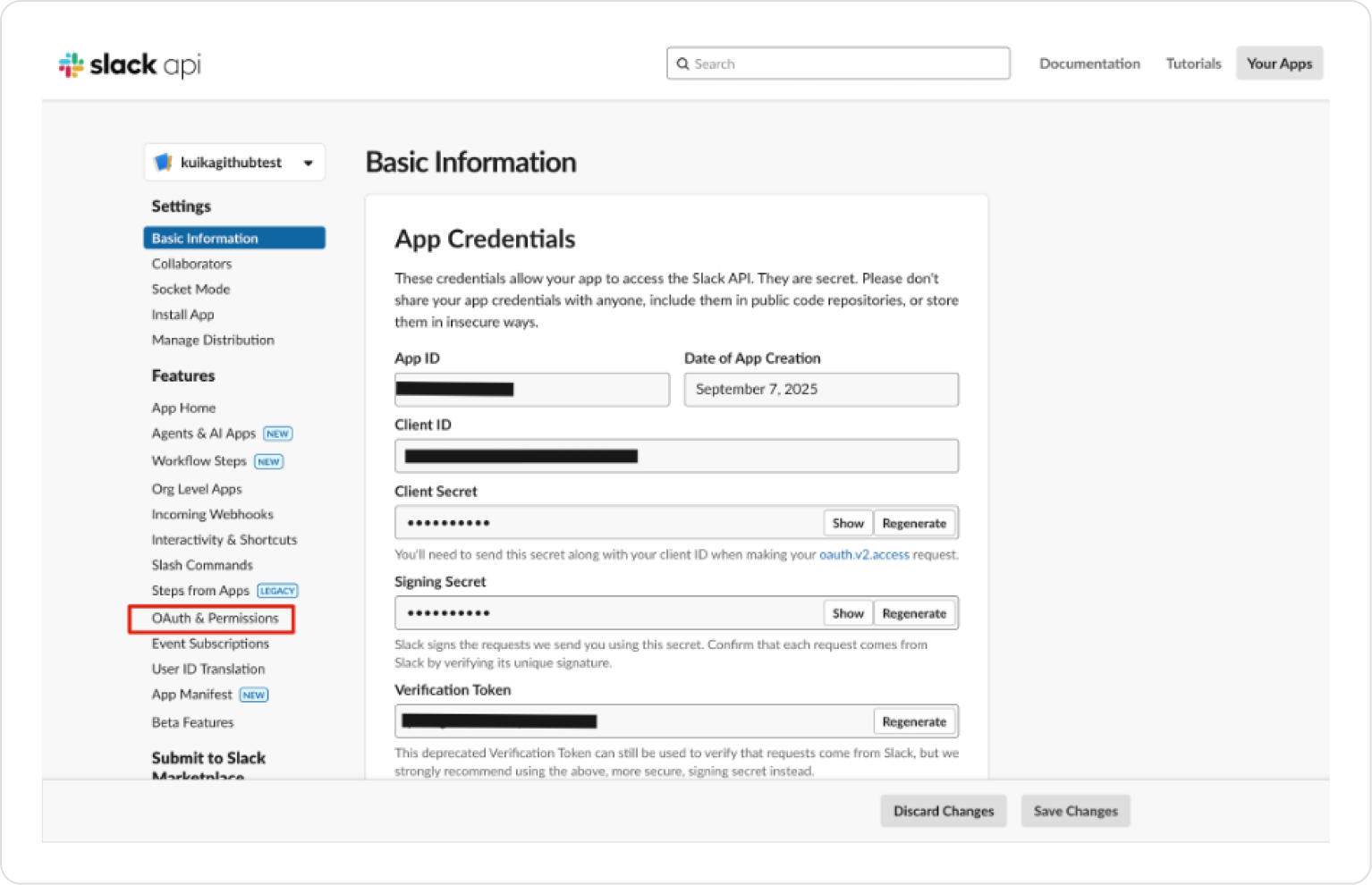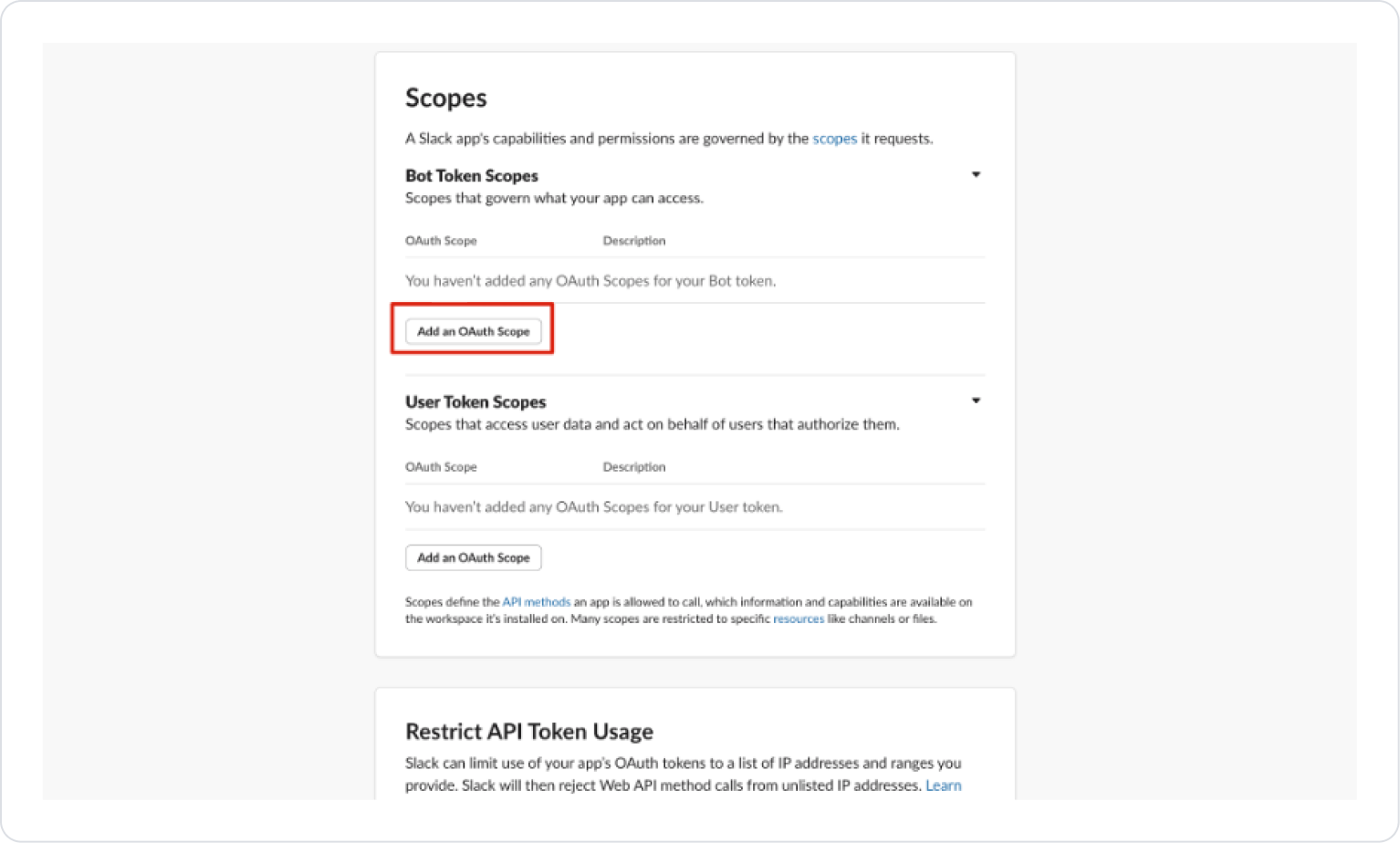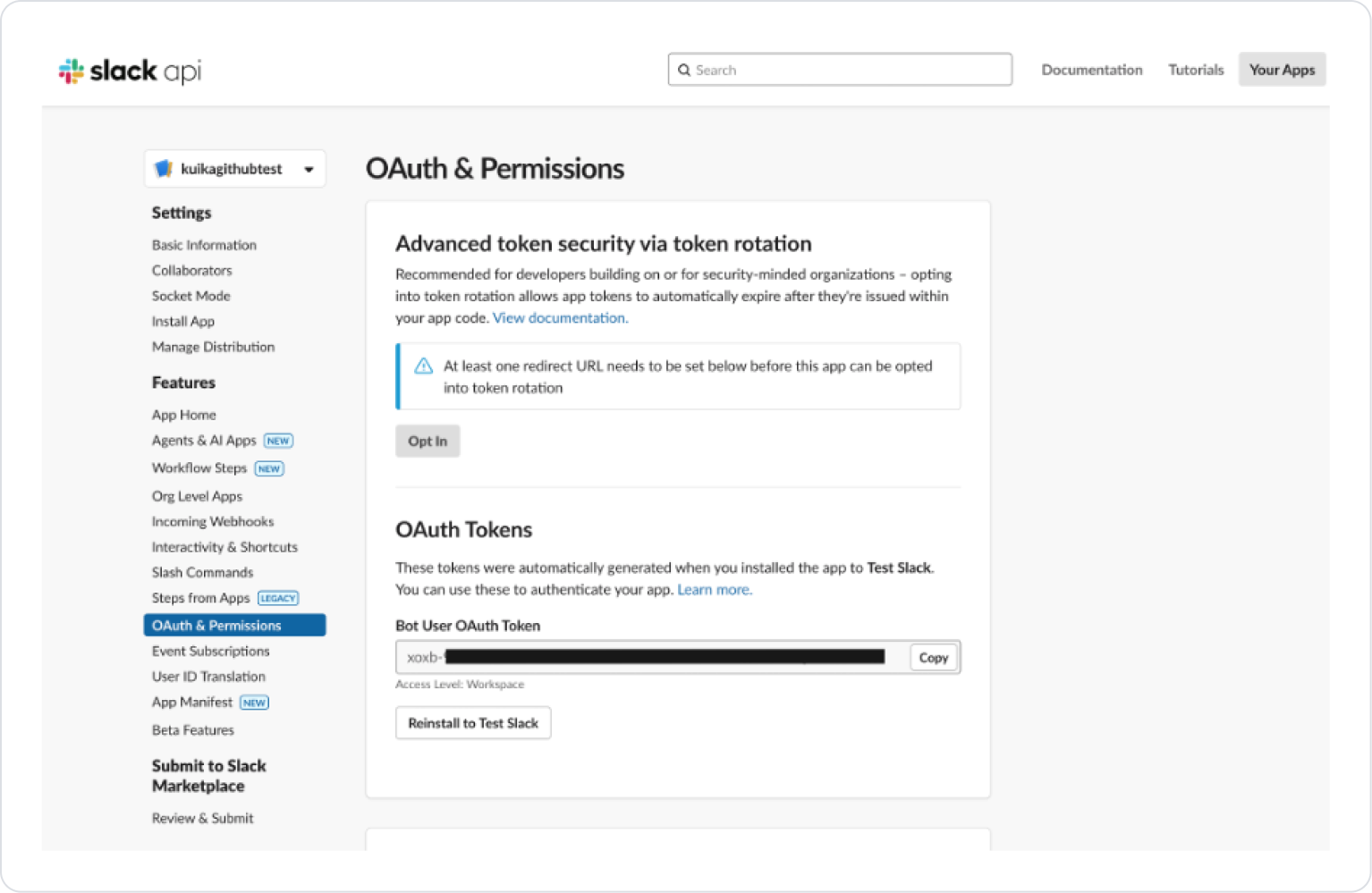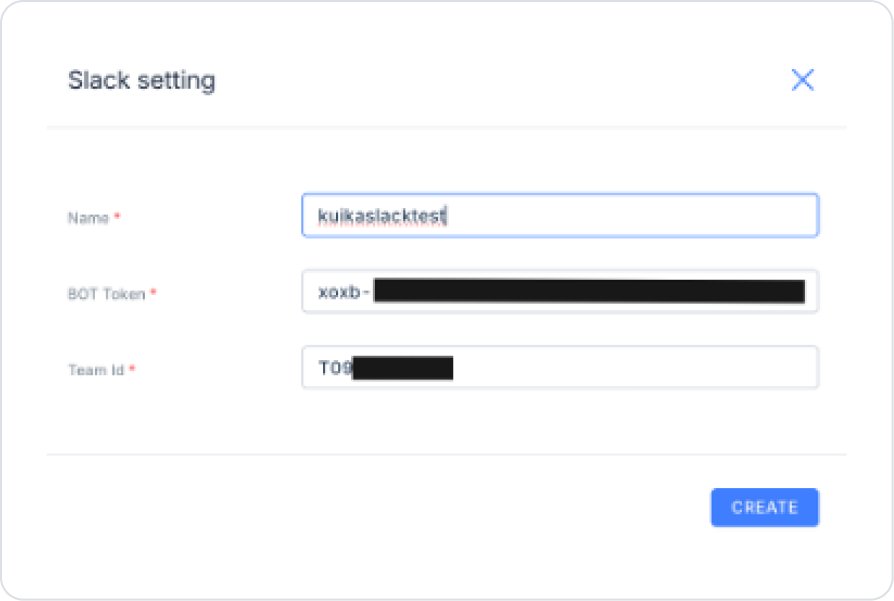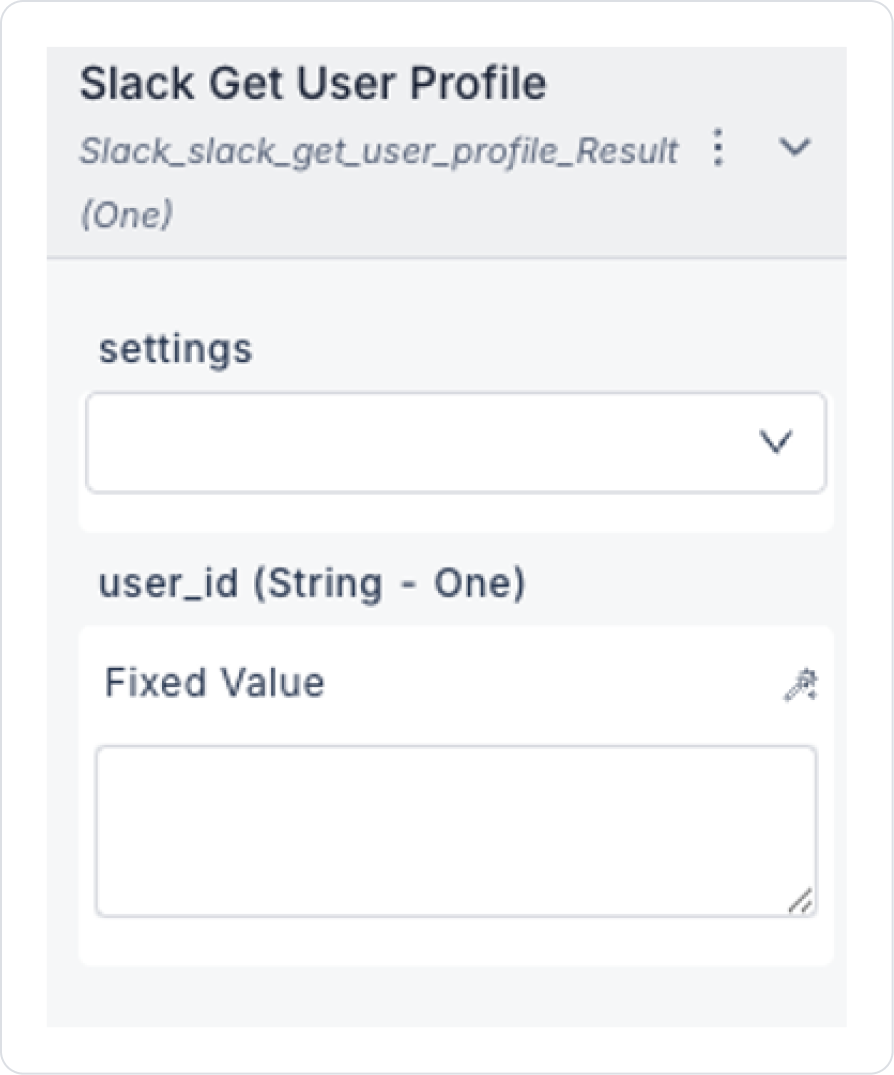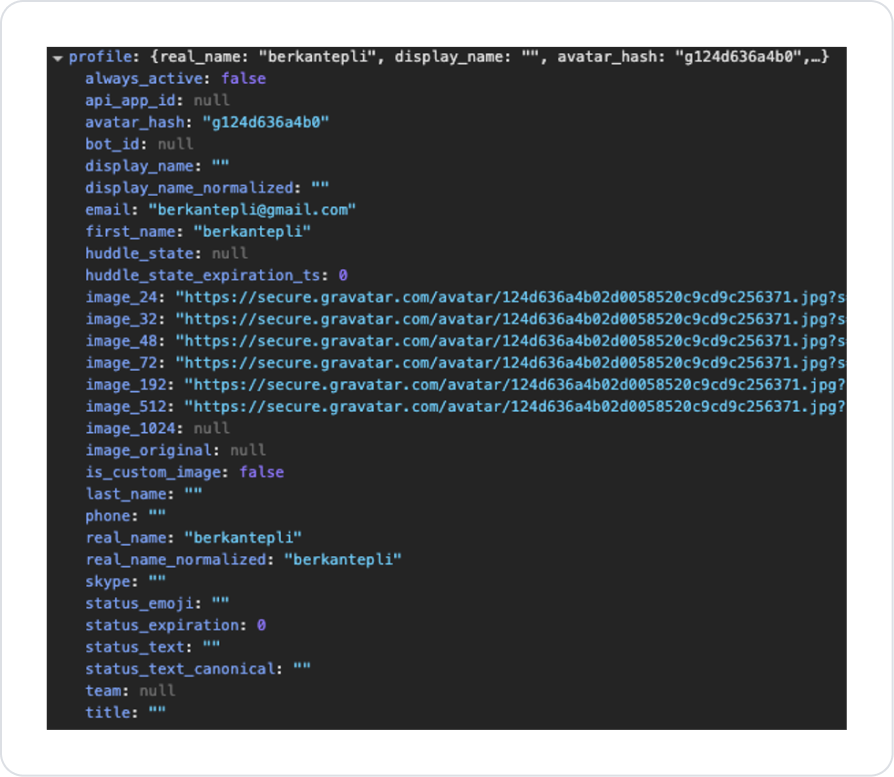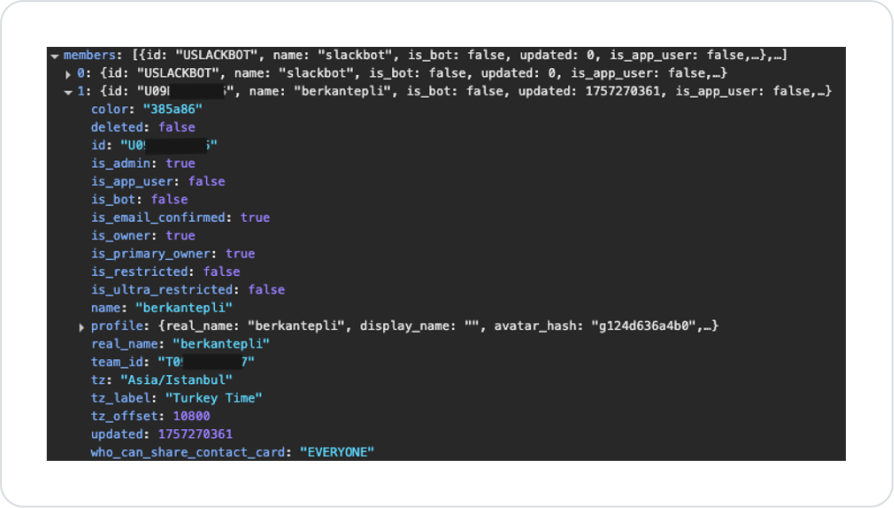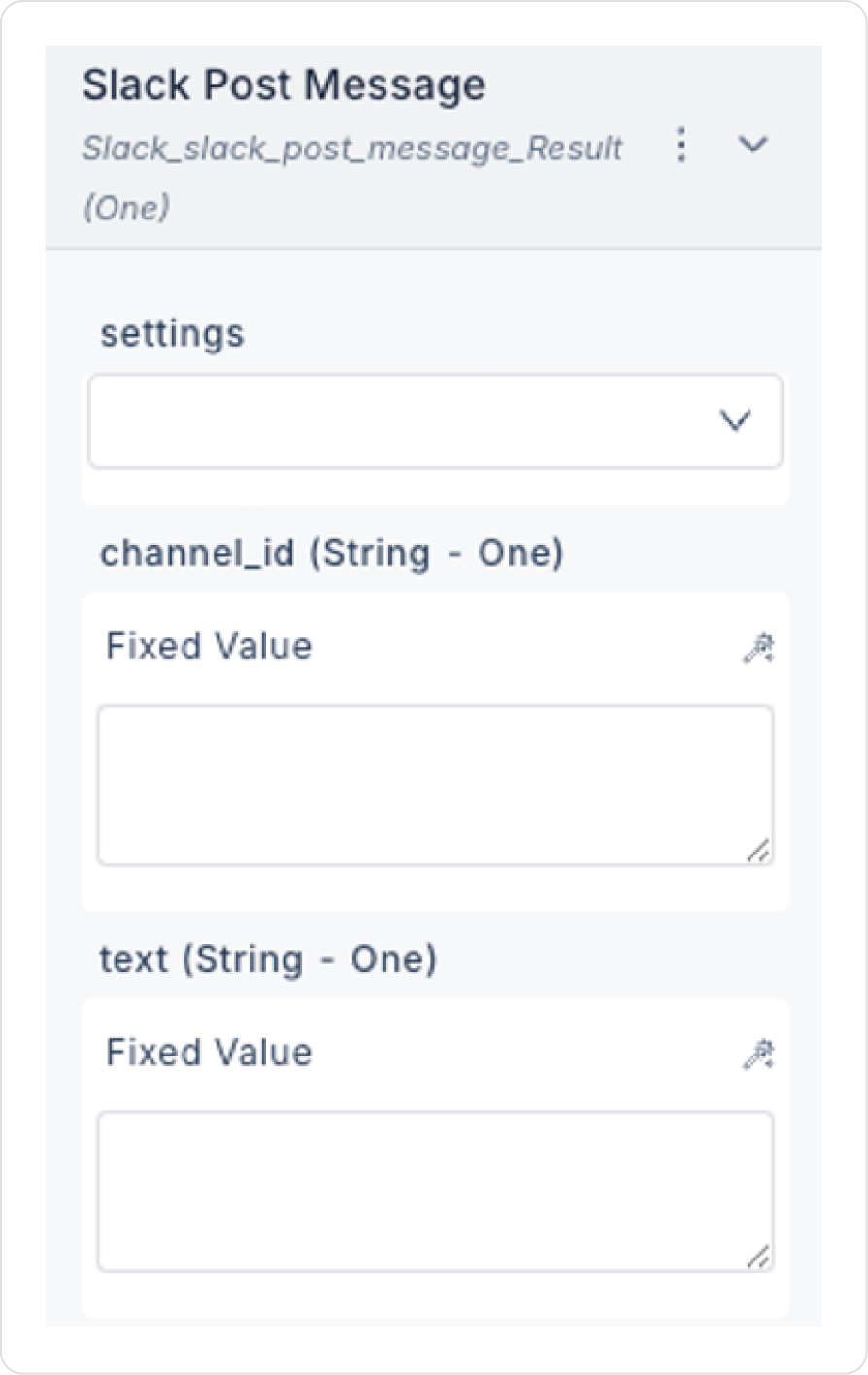Overview
Slack MCP enables your application to interact directly with the Slack API . This allows natural language-based clients (ChatGPT, Claude, Cursor, etc.) to perform actions such as sending messages on Slack, retrieving user and channel information, and fetching channel history.
Configuring Settings via Configuration Manager Log in to the Kuika platform. Select the project you will be working on from the Apps screen. Go to the Configuration Manager → App Settings tab. Click ADD NEW in the MCP → Slack section. In the window that opens: Name: A distinctive name to be given to this integration.BOT Token: The OAuth token created via the Slack application.Team Id: The code starting with T in the Slack workspace URL (e.g., https://app.slack.com/client/T01234567/... → T01234567 ). Creating a Slack BOT Token Go to Slack API Apps . Select the Create an App → From Scratch option. Select App Name and Workspace, then press the Create App button. From the left menu, enter the OAuth & Permissions section. Add the necessary permissions in the Scopes section: Minimum: channels:history, channels:read, chat:write, users:read, users.profile:read For Private/DM support: groups:history, groups:read, im:history, im:read, mpim:history, mpim:read Add the app to the Workspace by clicking Install to Workspace → Allow at the top of the page. An Bot Token starting with xoxb-... will be generated on the OAuth & Permissions page. This token and the Team Id found in the URL of the Slack workspace used are entered in the Configuration Manager → Slack Settings field in Kuika. Action Types Slack Get Channel History
Retrieves the message history of a specific channel.
Action Input
settings : Slack settings defined in Config Manager.channel_id : Channel ID (e.g., C12345678, G12345678, D12345678).limit : How many messages to return (max 1000).Action Output
ok → Was the API request successful?messages → List of channel messageshas_more → Are there more messages?pin_count → Number of pinned messages in the channelchannel_actions_count → Number of triggered actions in the channel (e.g., reminder, workflow)channel_actions_ts → Timestamp of the last actionMessage Details:
user → User ID who posted the message text → Message content ts → Timestamp (string float) type → Message type (usually “message”) subtype → Message subtype (e.g., join, file_share, bot_message) bot_id → Bot user ID bot_profile → Information about the bot that sent the message (id, name, app_id, icons, team_id) blocks → Message structure in Slack Block Kit format Slack Get User Profile
Retrieves a specific user's profile.
Action Input
settings: Slack settings. user_id: User ID (U12345678). Action Output
ok → Was the API request successful?profile → User profile details: display_name, real_name, email, title, status_text, status_emoji, phone, image_24, image_192, image_512, image_1024, image_original, always_active, is_custom_image, team, huddle_state, skypeSlack Get Users
Lists all users in the Workspace.
Action Input
settings: Slack setting. cursor: Used for pagination. Left blank for the first query. limit: Number of users returned (Default: 100, Max: 200). Action Output
ok → Was the API request successful?members → User list (id, name, real_name, email, profile images, etc.)response_metadata.next_cursor → Cursor for the next pagecache_ts → Time the response was prepared on the Slack sideUser Details
id, name, real_name, is_admin, is_owner, is_bot, is_email_confirmed profile → (display_name, real_name, email, phone, avatar images, status, title) tz, tz_label, tz_offset Slack List Channels
Lists all channels in the Workspace.
Action Input
settings: Slack setting. limit: Number of channels returned (Default: 100, Max: 200). cursor: Used for pagination. Action Output
ok → Was the API request successful?channels → Channel list id, name, is_private, is_shared, num_members, creator, created is_member, is_general, is_archived purpose and topic fields (creator, last_set, value) response_metadata.next_cursor → Cursor for the next pageSlack Post Message
Sends a message to a specific channel.
Action Input
settings: Slack settings. channel_id: Target channel ID. text: Message content. Action Output
ok → Was the API request successful?channel → Channel ID where the message was sentts → Slack timestamp of the messagemessage → Sent message object user → Sender user ID text → Message content bot_id → Bot ID (if it's a bot message) bot_profile → Bot information (name, app_id, icons, team_id) blocks → Slack Block Kit content subtype → Subtype (e.g., bot_message) Usage in Kuika
Slack settings created in Configuration Manager can be used by linking them to the settings parameter in the Slack Action in the project.
Example scenarios:
List the last 100 messages in a channel → Get Channel History Display a specific user's profile → Get User Profile List users in the workspace → Get Users List all channels → List Channels Send a notification to the project channel via the bot → Post Message 





